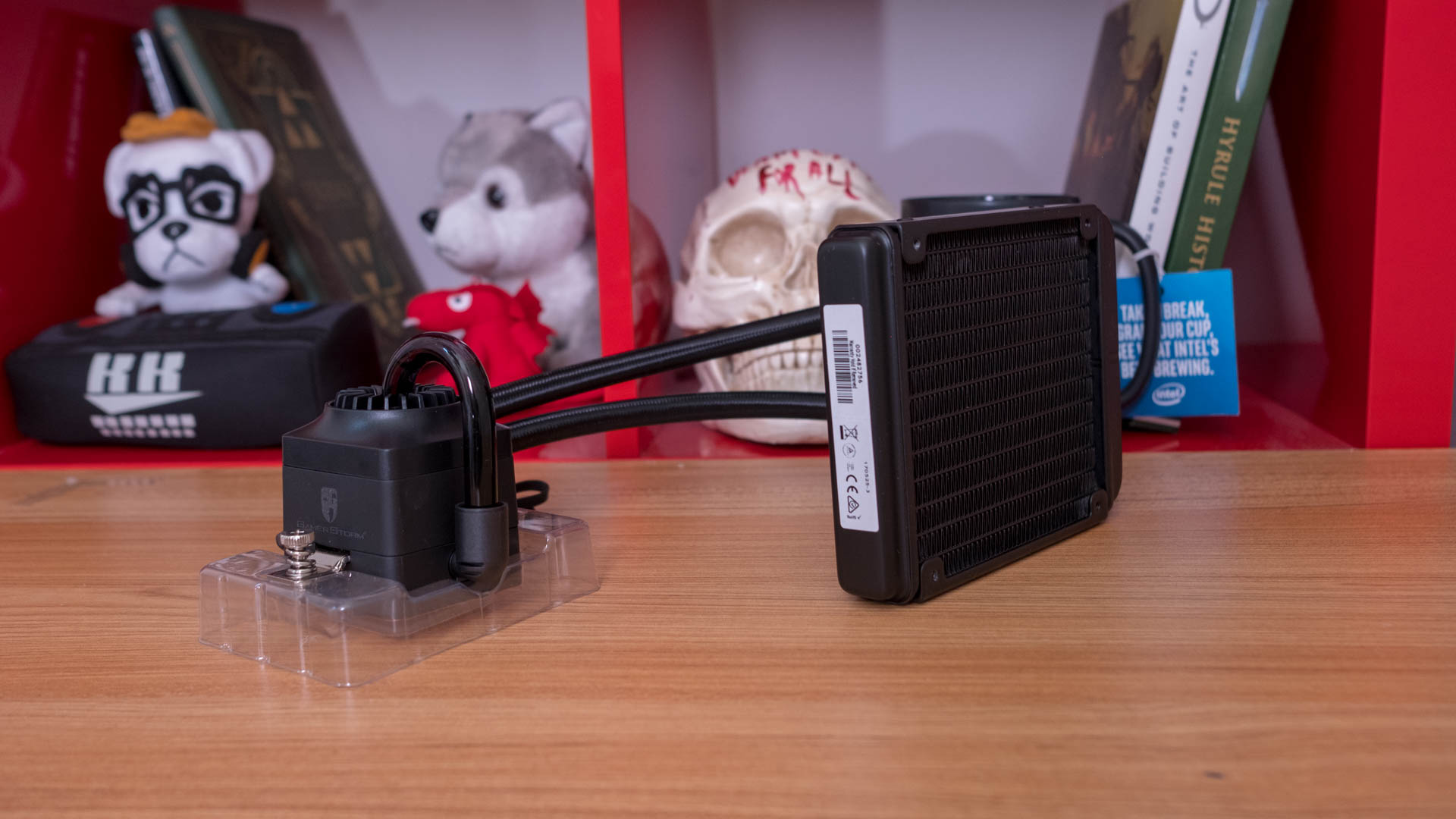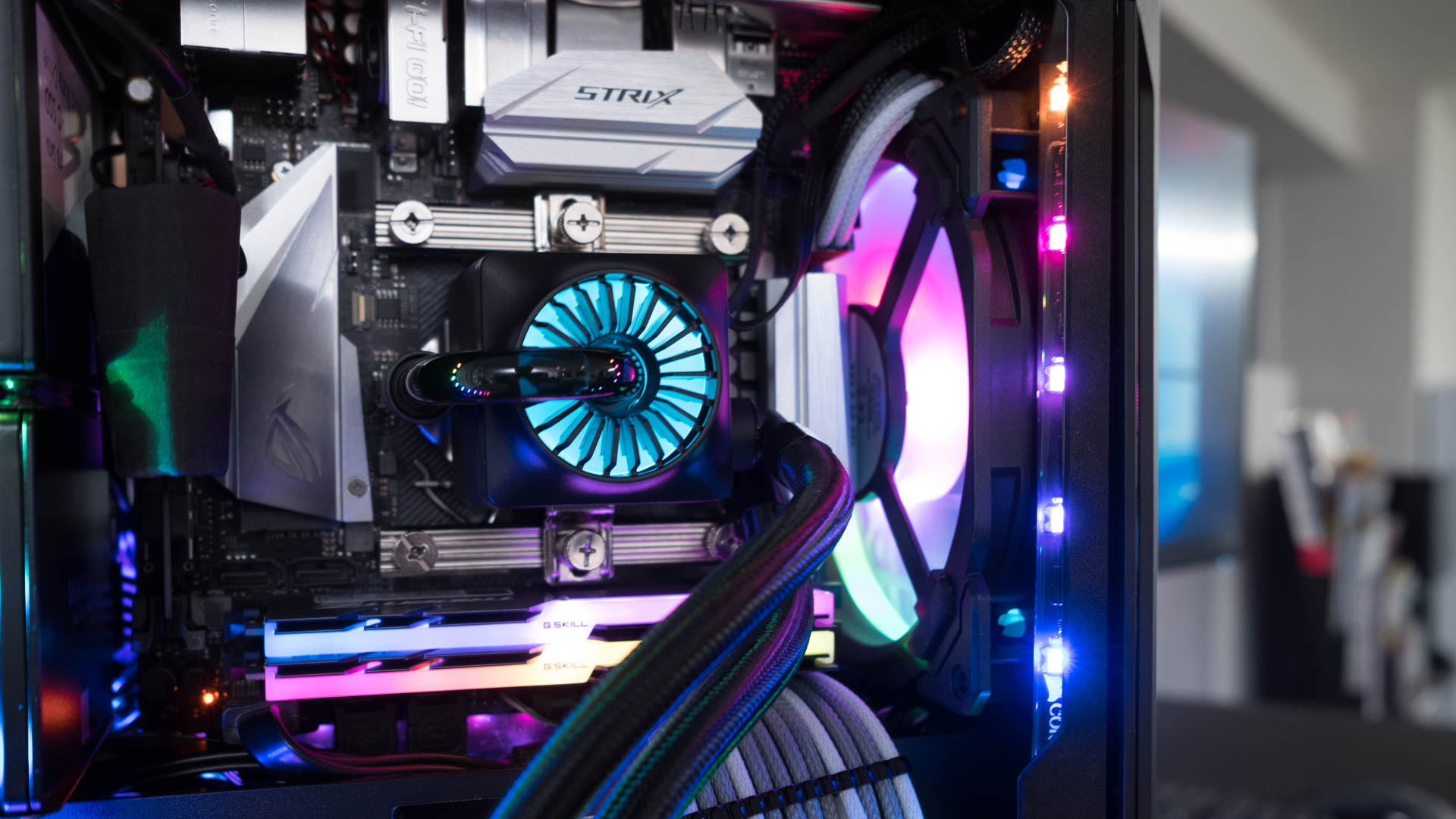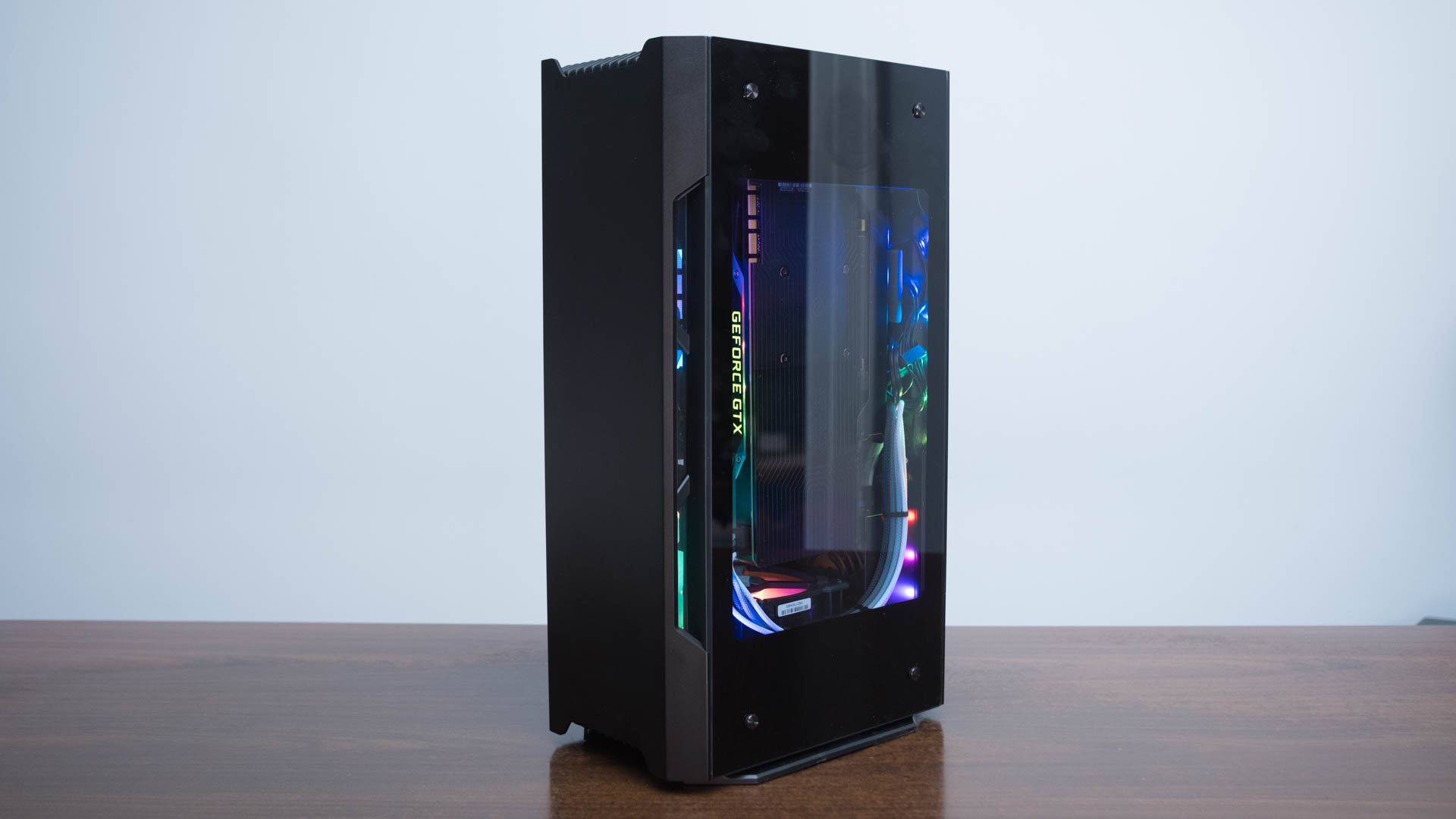How to build the ultimate mini gaming PC

2017 was an incredible year for PC components with new hardware popping up nearly each month. Even looking at CPUs by themselves, we saw the launch of AMD Ryzen, AMD Ryzen ThreadRipper, and Intel’s Coffee Lake processors. To honor all of these exciting releases, we decided to grab the best components of the last year and build the ultimate mini gaming PC.
Our goal was straightforward. To start, every component in the PC needed to have been released within two months at the time we built the PC. Next, we wanted to build a computer that could reasonably support gaming on a QHD (or 1440p) ultra-wide monitor, while still being as small as possible, which of course meant we were constrained to a Mini-ITX build.
Finally, we wanted to build something that would catch people’s attention. We strapped this rig all the way with sleeved cables from Singularity Computers, and enough RGB lighting to make our eyes roll in ecstatic joy (or maybe epileptic shock).

CPU: Intel Core i5-8600K
AMD Ryzen might have been on the top of our minds throughout the year, but in the end Intel Coffee Lake stole the show at the very end. Not only did Intel kick up the core count on its latest processor, the chip maker proved it can do more with fewer cores than AMD Ryzen.
With all of this in mind we picked out the Intel Core i5-8600K as it's our top pick as the best CPU for gaming. We could have easily socketed in an Intel Core i7-8700K instead, but as a gaming focused build the 8600K offers more than enough performance to maintain top frame rates. If we ever need the extra processing power for streaming and video editing, we can easily overclock the chip to the same, if not higher, frequencies as its bigger brother.

GPU: Nvidia GTX 1070 Ti
The Nvidia GTX 1070 Ti was easily our favorite GPU of the year. It practically offers the performance of a Nvidia GTX 1080 at a price that’s just slightly north of the Nvidia GTX 1070. It’s also the perfect GPU to drive 1440p (or QHD) gaming experience at 60fps or higher, which is exactly what our gaming monitor is capable of.

Motherboard: Asus ROG Strix Z370-I Gaming
When we decided upon a Mini-ITX build, the Asus ROG Strix Z370-I Gaming instantly popped into our mind as the only motherboard we could use. It’s the most stylish miniature motherboard on the market with massive heatsinks for the extreme performance we require. Despite its size, this Mini-ITX motherboard also supports up to M.2 PCIe SSDs and everything else we’re plugging into this PC.
Sign up for breaking news, reviews, opinion, top tech deals, and more.

Memory: G.Skill Trident Z RGB
Throughout the year we saw multiple manufacturers attempt to integrate RGB lighting into memory, but G.Skill was the first to do it with their Trident Z RGB. When we laid our eyes on the RAM’s beautifully blended colors and soft lighting it was love at first sight. We opted for a 16GB (2 x 8GB) and 3,000MHz kit, as it was the perfect capacity and speed for our gaming purposes.

Cooling: DeepCool Captain 120EX RGB
Keeping this RGB train rolling, we chose the DeepCool Captain 120EX RGB as our all-in-one liquid-cooler solution. It might come from a lesser known company than Corsair or Cooler Master, but this AIO performs just as well and has its own unique steampunk-ish styling.

Power supply: SilverStone SFX Series SX600-G
SFX-power supplies have come a long way since they were first introduced as tinsy 400-watt internal power bricks. The SilverStone SFX Series SX600-G packs an impressive 600-watts of energy capacity at an astonishing 80-Plus Gold rated efficiency.
That should be more than enough energy to power our rig and even give us a little overhead for overclocking. While our PC case can support up to a SFX-L power supply – of which SilverStone produces an 800W unit – we didn't want to risk bending our power cables that are going to be under enough stress as it is.

Storage: Samsung 960 EVO, Samsung 860 Pro SSD, WD Blue SSD
For our storage we knew we had to go with an M.2 PCIe SSD for our main drive. To fully take advantage of the speed NVMe storage offers without breaking the bank, it became evidently clear that an 1TB Samsung 960 EVO SSD was our best option.
To back it up, we also tacked on an 2TB Samsung 860 Pro plus another 1TB Western Digital Blue SSD for any additional storage spill over we would need for our extensive Steam libraries and other files. 4TB of SSD storage should get us through everything we need.

Case: Phanteks Evolv Shift
The Phanteks Evolv Shift stole our hearts when we first saw it as a prototype at CES 2017 and we really fell in love with it at Computex 2017. The aluminum case provides us with all the hardware support we need for a full-sized graphics card, multiple SSDs and the massive collection of cables that are a part of our ambitious build. Then the tempered glass sides are also perfect for display off all the parts and RGB lighting in our showcase rig.

Fans and lighting: Corsair LL fans and Corsair LED Lighting PRO Expansion Kit
To complete our fully RGB-ified build, we needed lighting strips and fans – a field in which Corsair is king. Not only are Corsair’s Light Loop (LL) fans the best looking in the industry, they also provide decent static pressure and are incredibly quiet even while spinning at maximum speed. Considering our motherboard only has three total fan headers, it made sense to also add a Silverstone fan hub to our build list.
To complement all the rainbow lighting from the fans, we also added on four of lighting strips courtesy of Corsair’s Lighting PRO Expansion Kit. This way we could illuminate every corner of our gaming PC and show off the components in multi-colored splendor.

Power cables: Singularity Computers custom sleeved cables
Last but not least, we wanted custom sleeved cables and thankfully Singularity Computers fully delivered on our dreams. Though these are easy enough to build on your own these days, the company had a much more diverse inventory of sleeving than us and not to mention expertise in this field. As to not conflict with our extremely RGB-focused build, we chose to go with a monochromatic pattern for our custom sleeved cables.

How we built it
Putting together a pretty list of parts for our ultimate mini gaming PC is one thing, but building it is a little more difficult. We’re going to quickly go over some of the things you’ll have to prepare yourself for an ambitious build such as this and tips on how manage it for yourself.



Measure twice, build once
When building a PC this small, you’ll have to spend a decent amount of time planning everything out and we literally spent months plotting everything out for our ultimate mini gaming PC. This involves triple-checking the dimensions of each part, mentally building the PC ahead of time and really having a complete picture of how everything will come together.
All this pre-planning comes especially in handy when you actually start building the PC. Working in a small case such as this might change the order of parts you install, as we began the build by attaching all the cooling elements and power supply first rather than last as with a traditional mid- or full-tower case.
And even with all the planning ahead of time, we ran into a few hitches. For one thing, we had to uninstall and reinstall the RAM multiple times to get at other connectors we missed. We also wished we could have installed our liquid-cooler’s radiator backwards, but the pipes would have run directly into the graphics card hanging overhead.

Mess-o-cables
If you think your rear-panel is rat’s nest, here’s a look at all the wires coming out of our RGB accessories and hubs. Thankfully, our pre-planning prepared us for this and we were able to hide everything behind the rear panel on the PC case. Still our work here isn’t done yet, and we’ll be taking a second pass to neatly tie everything off.
The Phanteks Evolv Shift also had a smaller than expected internal cable routing area, which made it impossible for us to hide more than a single sleeved cable inside the chassis.



The payoff
For all of our pre-planning struggles and the sheer elbow grease it took to put the all of the side panels back in place, turning on our ultimate mini gaming PC made up for all the trouble it was worth.
To see everything fit together and all fire up successful on the first try was a triumph for us. And to bask in all the RGB lighting and the gaming performance makes the victory all the more sweeter.

Kevin Lee was a former computing reporter at TechRadar. Kevin is now the SEO Updates Editor at IGN based in New York. He handles all of the best of tech buying guides while also dipping his hand in the entertainment and games evergreen content. Kevin has over eight years of experience in the tech and games publications with previous bylines at Polygon, PC World, and more. Outside of work, Kevin is major movie buff of cult and bad films. He also regularly plays flight & space sim and racing games. IRL he's a fan of archery, axe throwing, and board games.